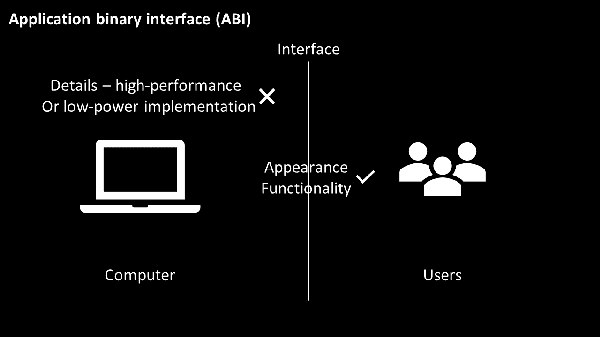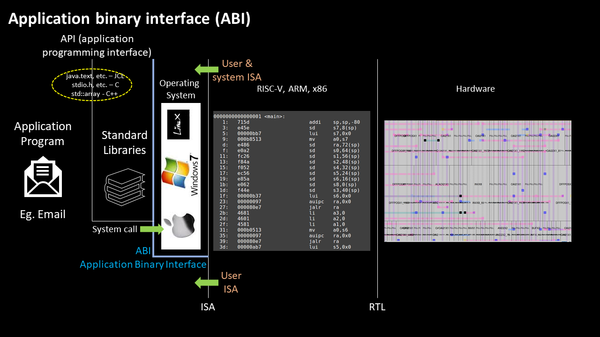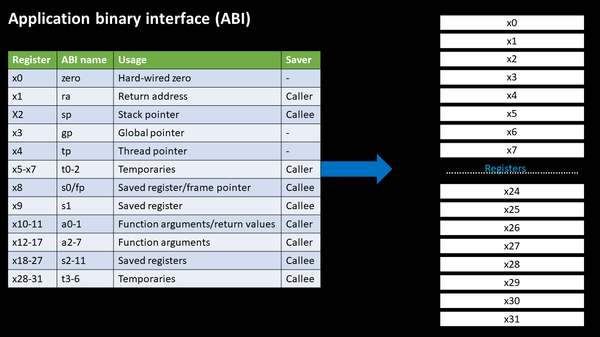Hi
ABI (application binary interface), as the name says, is an interface, that helps programs access system hardware and services. Let’s break it down
When users look forward to buy computers, they are, more likely, interested in the appearance and functionality of the computer, whether it serves their purpose. And, very unlikely, user will be interested in its physical design implementation of the chips inside the computer, like whether its high-performance or low power implementation.

Now, here, the appearance and functionality, are an example of interface between users and computers.
Let’s consider another kind of interface – more VLSI and technical
Application program interacts with standard libraries using an interface called ‘application programming interface (API)’. The very basic example, you must have seen, is while writing a C program where you use ‘#include stdio.h’ – this interface defines the core input and output functions

Next interface is the operating system, which handles IO operations, allocates memory and some other low-level system functions. This layer is, by the way, also the one which converts the function programs into its assembly language program and/or machine language program, providing “bit-patterns” to the underlying hardware. This interface is the ISA interface (in this blog, its RISC-V ISA).
Then, the other VLSI level interface is RTL which implements the RISC-V specifications and is an important interface between the ISA and its physical design implementation
Coming back to ABI or application binary interface, it consists of 2 parts as shown in above image – one is the set of all user instructions itself, and second is the system call interface through the operating system layer. How does it do that in reality? …..Through registers shown in below image

TAKE THE FIRST STEP NOW…
I will see you in class and happy learning…
